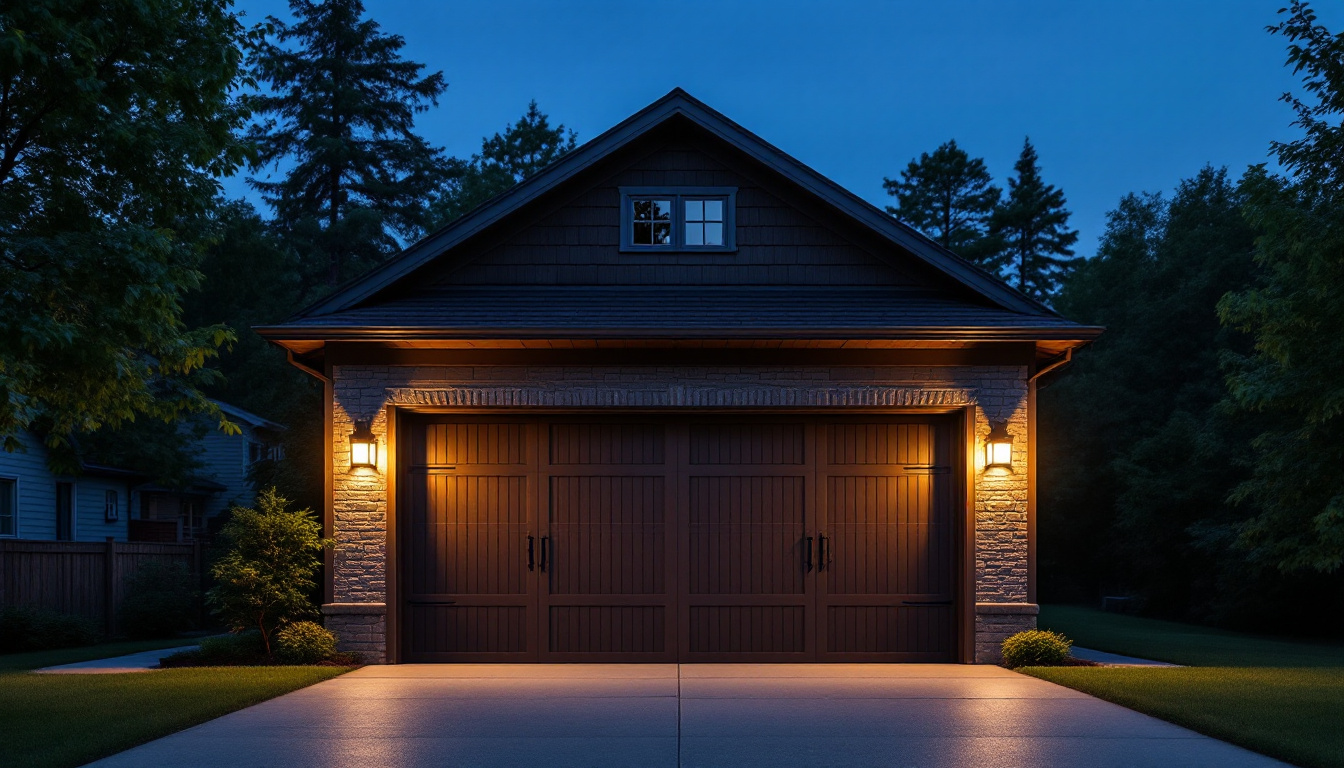

In the world of lighting installation and design, lamp timer switches are essential tools that enhance energy efficiency and convenience. However, even experienced lighting contractors can make mistakes when incorporating these devices into their projects. Understanding common pitfalls can help avoid costly errors and ensure a smoother installation process. This article explores frequent mistakes made by lighting contractors regarding lamp timer switches, offering insights into best practices for optimal results.
Before delving into the common mistakes, it’s crucial to understand what lamp timer switches are and how they function. These devices allow users to program lighting schedules, enabling lights to turn on or off automatically at designated times. This not only enhances convenience but also contributes to energy savings, making them an attractive option for both residential and commercial settings. Moreover, the ability to customize lighting schedules can significantly improve the ambiance of a space, allowing homeowners to create a warm and inviting atmosphere that aligns with their daily routines.
In addition to their practical applications, lamp timer switches can also be a key component in smart home setups. By integrating these switches with other smart devices, users can create a cohesive environment that responds to their lifestyle. For instance, pairing a lamp timer with motion sensors can ensure that lights turn on when someone enters a room, further enhancing energy efficiency and convenience.
Lamp timer switches come in various forms, each with unique features. Mechanical timers, for example, are straightforward and often less expensive, utilizing a dial to set on and off times. Digital timers offer more flexibility, allowing for multiple programs and settings. Smart timers can be controlled remotely via smartphone apps, providing advanced scheduling options and integration with home automation systems. These smart timers often come equipped with features like sunrise and sunset settings, which automatically adjust the lighting schedule based on the time of year, ensuring that your home is always well-lit when needed.
Another interesting type of lamp timer is the astronomical timer, which adjusts its settings based on geographical location and time of year. This means that as the days grow longer in summer or shorter in winter, the timer will automatically adapt, providing optimal lighting without the need for manual adjustments. Such advanced features make these timers particularly appealing for outdoor lighting applications, where consistent illumination is essential for safety and aesthetics.
The advantages of lamp timer switches are numerous. They not only enhance the convenience of lighting control but also promote energy efficiency by ensuring lights are only on when needed. This can lead to significant cost savings over time. Moreover, timer switches can improve security by simulating occupancy, deterring potential intruders. When lights turn on and off at programmed intervals, it creates the illusion that someone is home, which can be a powerful deterrent against break-ins.
Additionally, lamp timer switches can help in maintaining a consistent lighting schedule that aligns with your lifestyle. For instance, setting a timer to turn on outdoor lights at dusk can ensure that your home is always welcoming when you arrive after dark. Furthermore, for those who travel frequently, these timers can provide peace of mind by maintaining a semblance of normalcy in your home, which can be especially important for long absences. In this way, lamp timer switches not only serve practical purposes but also enhance the overall safety and comfort of your living environment.
Even seasoned contractors can encounter issues during the installation of lamp timer switches. Recognizing these common mistakes can help prevent complications and ensure a successful setup.
One of the most prevalent mistakes is improper wiring. Lamp timer switches typically require specific wiring configurations, and failing to adhere to these can lead to malfunctions or even hazards. It’s essential to consult the manufacturer’s instructions and ensure that the wiring matches the specifications for the particular switch being installed.
Additionally, contractors should be aware of the electrical codes in their area. These codes dictate how wiring should be handled to ensure safety and compliance. Ignoring local regulations can result in fines or the need for costly rework.
Another common error involves overloading the lamp timer switch. Each switch has a maximum wattage rating, and exceeding this limit can lead to overheating and potential failure. Contractors must calculate the total wattage of the connected lights and ensure it falls within the switch’s specifications.
It’s also advisable to consider the type of bulbs being used. For instance, LED bulbs typically draw less wattage than incandescent bulbs, which can allow for more flexibility in lighting options. However, it’s crucial to verify that the timer switch is compatible with the type of bulbs being installed.
Many contractors overlook the importance of user instructions. Each lamp timer switch comes with specific guidelines for programming and operation. Failing to read these instructions can lead to incorrect settings, resulting in lights that do not operate as intended.
Taking the time to familiarize oneself with the timer’s features can significantly enhance the installation process. This knowledge not only aids in proper setup but also empowers contractors to provide better service to their clients by explaining how to use the timer effectively.
Programming lamp timer switches can be just as challenging as the installation process. Mistakes in this area can lead to ineffective lighting schedules, which can frustrate clients and diminish the value of the installation.
A frequent programming mistake is setting the wrong time zone. Many digital and smart timers require users to specify their local time zone to function correctly. If this step is overlooked, the lights may turn on or off at unintended times, leading to confusion and dissatisfaction.
Contractors should double-check the time zone settings during installation and ensure that clients are aware of how to adjust these settings if needed. This proactive approach can prevent future issues and enhance client satisfaction.
After programming the lamp timer switch, some contractors skip the crucial step of testing the settings. This oversight can result in discovering issues only after the installation is complete, leading to additional service calls and potential dissatisfaction from clients.
Testing the timer settings immediately after installation allows contractors to identify any errors and make adjustments on the spot. This practice not only ensures that the system works as intended but also demonstrates professionalism and attention to detail.
Lighting needs can change with the seasons, and many contractors fail to account for this when programming lamp timer switches. For instance, as daylight hours fluctuate, the timing for outdoor lights may need adjustment to ensure optimal performance.
Encouraging clients to review and adjust their lighting schedules periodically can enhance the effectiveness of the lamp timer switch. Providing guidance on how to make these adjustments can further solidify the contractor’s role as a trusted advisor.
Maintenance is an essential aspect of ensuring the longevity and effectiveness of lamp timer switches. Neglecting this area can lead to premature failures and dissatisfied clients.
For smart lamp timer switches, firmware updates are crucial for optimal performance. Many contractors overlook the importance of keeping the device’s software up to date. Manufacturers often release updates to improve functionality, fix bugs, and enhance security.
Contractors should educate clients on the importance of checking for updates and provide instructions on how to perform these updates. This proactive approach can help prevent issues and ensure that the timer switch operates smoothly over time.
Some lamp timer switches are equipped with backup batteries to maintain settings during power outages. Contractors often forget to inform clients about the need to replace these batteries periodically. A dead battery can lead to loss of settings and unexpected behavior from the timer switch.
Providing clients with a simple maintenance checklist that includes battery replacement reminders can enhance their experience and ensure the longevity of the installation.
Dust and debris can accumulate around lamp timer switches, potentially affecting their performance. Contractors may overlook the importance of advising clients to clean these devices regularly. A simple dusting can prevent overheating and ensure that the timer operates effectively.
Encouraging clients to incorporate cleaning into their regular maintenance routine can help prolong the life of the timer switch and maintain its functionality.
To avoid the common mistakes outlined above, lighting contractors can adopt several best practices that promote successful installations and satisfied clients.
Investing in training for all team members is essential. Comprehensive training ensures that everyone involved in the installation process understands the nuances of lamp timer switches, from wiring to programming and maintenance. This knowledge can significantly reduce the likelihood of errors and enhance overall project quality.
Regular training sessions can also keep the team updated on new products and technologies, allowing them to offer the best solutions to clients.
Engaging in thorough consultations with clients before installation can help clarify their needs and expectations. Understanding the specific requirements for lighting schedules, preferences, and usage patterns can guide the selection and programming of lamp timer switches.
By establishing clear communication, contractors can ensure that the final installation meets client expectations and operates effectively.
Providing clients with clear documentation on how to use and maintain their lamp timer switches can enhance their experience. This documentation should include programming instructions, maintenance tips, and contact information for support.
Following up with clients after installation can also foster positive relationships and provide an opportunity to address any questions or concerns. This proactive approach can lead to repeat business and referrals.
Lamp timer switches are valuable tools that enhance lighting control and energy efficiency. However, common mistakes in installation, programming, and maintenance can hinder their effectiveness. By understanding these pitfalls and adopting best practices, lighting contractors can improve their installations and provide exceptional service to their clients.
Ultimately, a commitment to quality and attention to detail will not only enhance the performance of lamp timer switches but also contribute to the overall success of lighting projects. As the industry continues to evolve, staying informed and adaptable will be key to thriving in the competitive landscape of lighting installation.
Ready to avoid the common pitfalls of lamp timer switch installations and elevate your lighting projects? Look no further than LumenWholesale for all your lighting needs. With our extensive selection of top-quality, spec-grade lighting products at unbeatable wholesale prices, you can ensure every installation is a success. Say goodbye to inflated markups and hello to reliable, high-performance lighting that meets the highest industry standards. Plus, with free shipping on bulk orders, you can stock up on premium lighting without the worry of hidden fees. Don’t compromise on quality or value—choose LumenWholesale for the perfect blend of affordability and convenience. Visit us now at Wholesale Lighting at the Best Value and take the first step towards superior lighting solutions.

Discover why Westgate Lighting is essential for any successful lighting project.

Discover the essential insights lighting contractors need to know about outdoor garage lights.

Discover the latest trends in garage motion lighting that every lighting contractor should be aware of.

Discover how industrial dining lights can transform your space with their unique blend of style and functionality.
Get notified when NEW deals are released.
Optimize your budget with wholesale discounts.
Only top-quality, specification-grade lighting products.
No additional costs at checkout - what you see is what you pay.
We understand the unique needs of contractors.